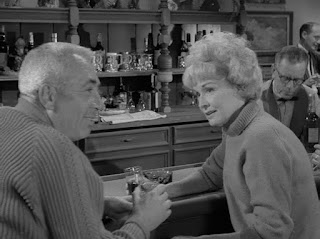I've written about West Station Antiques and Gibson's Books in Owen's Cross Roads and Scottsboro in two posts here and here. In this posting I'm discussing Arab. Perhaps one day we'll visit Egypt and Hollywood.
So why is the town named Arab? Stephen Tuttle Thompson settled in the area around 1840. By the late 1850's a community known as Thompson's Village had developed around his farm. In 1882 Thompson applied to the U.S. government for a post office; one of the possible names he submitted was "Arad", the middle name of his son. The story goes that a postal official interpreted that as "Arab". And here we are.
This truly was a quick visit, so I'm not doing justice to the town here with just a few photos and a bit of history. One thing we missed was the Historic Village near the city park. This complex of ten buildings recreates life in the area from the 1880's until the 1940's using authentic furnishings and decor. You can read about the origin and development here. A Veterans' Memorial is located at the entrance of that city park.
The population of the town was just over 8000 in the 2010 U.S. Census. Yet despite its small size Arab can claim several notable people. Liles Burke is a native and a U.S. judge for the northern district of Alabama. Vernon Derrick was a musician who lived most of his life in Arab; he died in 2008. He played mandolin and fiddle with the Stanley Brothers, Jimmy Martin's bluegrass band and Hank Williams, Jr.'s Bama Band. Jill King is a country music singer born in Arab; she released her first album in 2003. Another country music singer, Wayne Mills, was also an Arab native who was murdered in Nashville in 2013. He had released five studio and two live albums. Baseball pitcher Jack Lively was born in Joppa, but settled in Arab after his athletic career ended.
One of the most famous people associated with Arab is Fred Nall Hollis, who was born in Troy but graduated from high school in Arab after his family moved there. "Nall" as he is known professionally has since become an internationally renowned artist. He studied in France and under Salvador Dali and works in many media, including mosaics, sculpture, drawing, porcelain and carpets. He has traveled and lived widely, but in 2005 returned to Alabama where he built a studio in Fairhope.
More comments are below.
Businesses along a portion of Main Street [Alabama 69]
This photo and one below are the view as we drove into town on Main Street.
Tuttle Thompson Park is located downtown.
Looking back toward downtown from the pocket park
Our Uncle John and Aunt Myrna Shores, mom's older brother and his wife, are buried in Brookwood Cemetery and Memorial Gardens.
Uncle John and Aunt Myrna in the mid-to-late 1990's
Hotel Thompson in Arab, 1940
Dickson's Truck in Arab, 1940
From the Wade Hall Collection at Troy University Libraries
via Alabama Dept of Archives and History
via Alabama Dept of Archives and History
Arab is one of several Alabama towns included in James W. Loewen's Sundown Towns: A Hidden Dimension of American Racism [2018]. Historically the term "sundown town" indicated a place to be vacated by blacks before dark. Today's broader definition indicates a neighborhood, town or county with planned discrimination against blacks, Jews and/or others. You can read more about Loewen's Alabama towns here.


















































